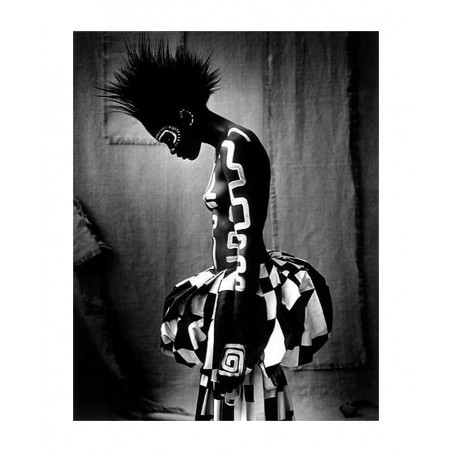

There are very strict guidelines to how the body painting and adornment is carried out and an Aboriginal person is not allowed to just use any motives or adornment in their transformation. The specific designs and motifs used by the Aboriginals reveal their relationships to their family group, social position, tribe, precise ancestors, totemic fauna and tracts of land. It is related to spiritual matters and is very creative in character. Their cultural rituals including body painting differ between Aboriginal Tribes and topographic location. (15) Success in hand combat (16) Star symbol indicated gallantry or other major life accomplishments (17) Hoofmarks signified a successful horse raid on the enemy (18) Four stages of life: childhood, youth, middle age, and wisdom of old age (19) Lightning symbolizes the Thunderbird to bring power and speed to the warrior (20) Hail to rain down damage on the enemy and defeat them.Aboriginal body painting or art and personal ornamentation is an ancient tradition which carries deep spiritual significance for the Australian Indigenous People.

This symbol is used today for returning Native veterans of the U.S. (12) Shaman Eye represents knowledge, north, south, east & west & the spirit world inside (13) Crossed arrows meant war (14) Return of the warrior. (11) Sun & earth represent harmony & balance in spirit and the natural world. (11-20) Native American painting symbols. A circle around a horse’s eye enabled the horse to foresee danger. War ponies were adorned in paint as elaborate as their riders.

(9) A Zuni brave of the Pueblo tribe in the Zuni River Valley in New Mexico. Movies like Last of the Mohicans, Dances with Wolves, Little Big Man, and the PBS series, Jamestown, have brought attention to historical accuracy of Native adornment.
WHITE TRIBAL BODY PAINT FULL
(8) The famous native actor, Wes Studi, in Last of the Mohicans, dressed in full war regalia, with magnificent roach, and shaved head painted red, white and black.

A white line painted across the face with spikes on either side sometimes symbolized tusks of a bear. The Pamunkey often painted their bodies in swaths of red and green.
WHITE TRIBAL BODY PAINT SERIES
(6) A scene from the PBS series Jamestown, about the early American frontier and the Pamunkey, the first federally recognized Indian tribe in Virginia and descendants of the Powhatan, Pocahontas’s tribe. (5) An 1899 photograph of Oglala Sioux brave, Last Horse, in full war paint. (4) A modern Nez Perce brave echoes the traditional trappings of his ancestors.
WHITE TRIBAL BODY PAINT SKIN
(3) George Catlin’s 1832 depiction of Nez Perce brave, Rabbit Skin Leggings, in full regalia, painted red war paint, magnificently feathered and beaded and with a dramatic upright roach atop his head. Hail symbolized a prayer for misfortune on the enemy. Red and black were both colors of war and victory. (2) Algonquin traditional war paint used red, black and white geometric designs with vivid effect. The painted hand across the chief’s mouth signified his success in hand-to-hand combat. Red was a favored color of the Iowa and many Plains Indians. PHOTOS: (1) Early frontier illustrator George Catlin’s portrait of The White Cloud, head chief of the Iowa tribe (1845) National Gallery of Art, Washington DC.


 0 kommentar(er)
0 kommentar(er)
